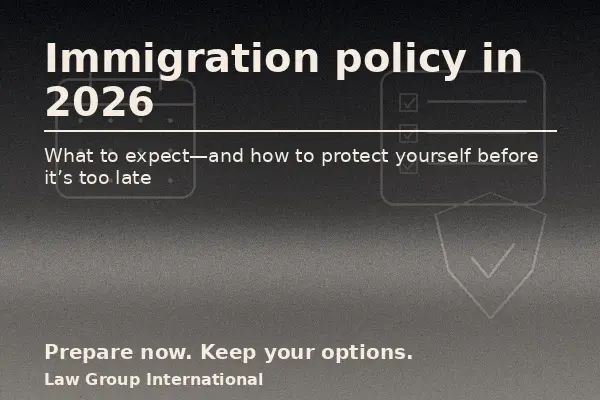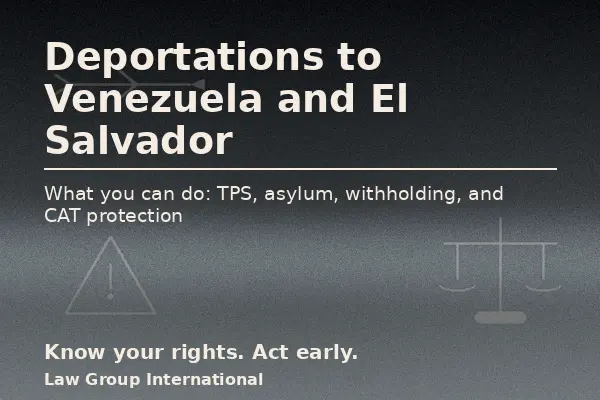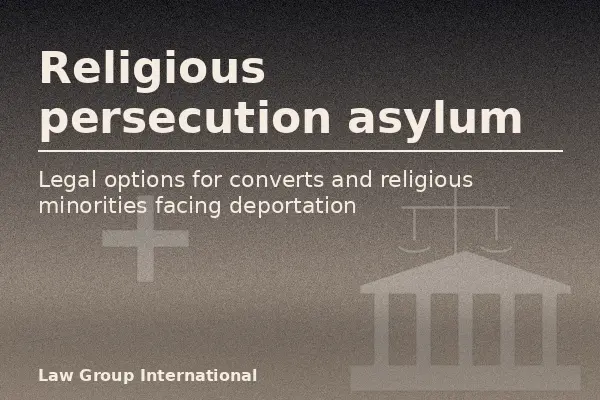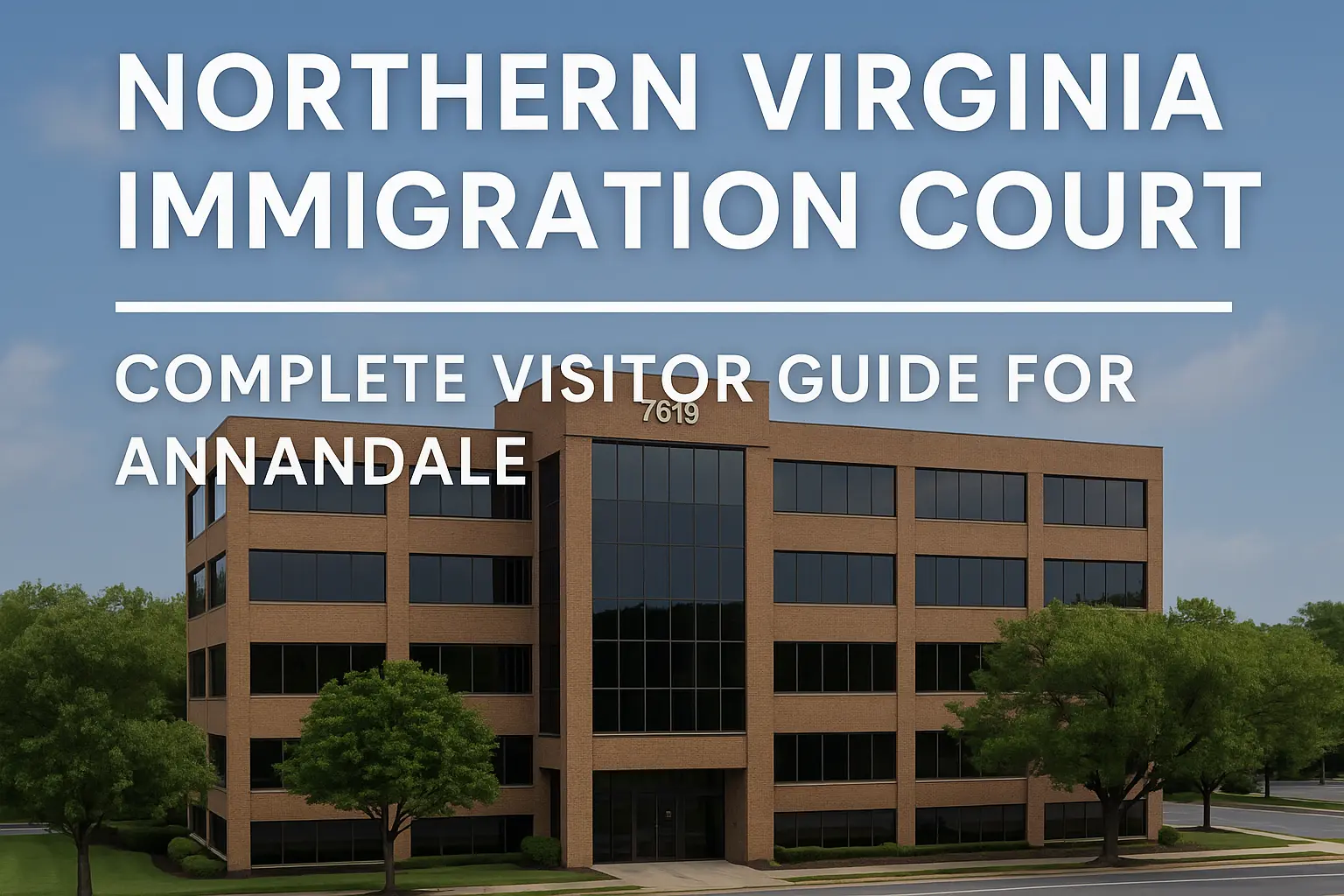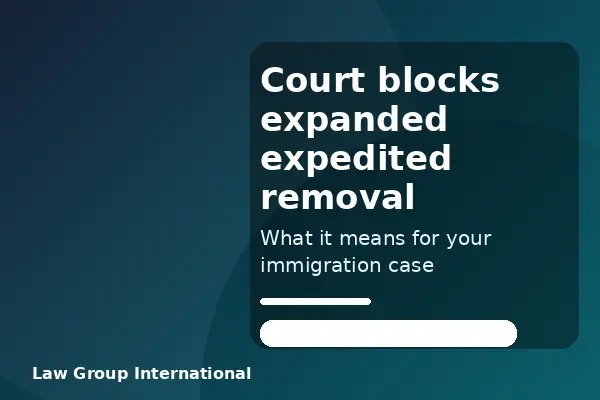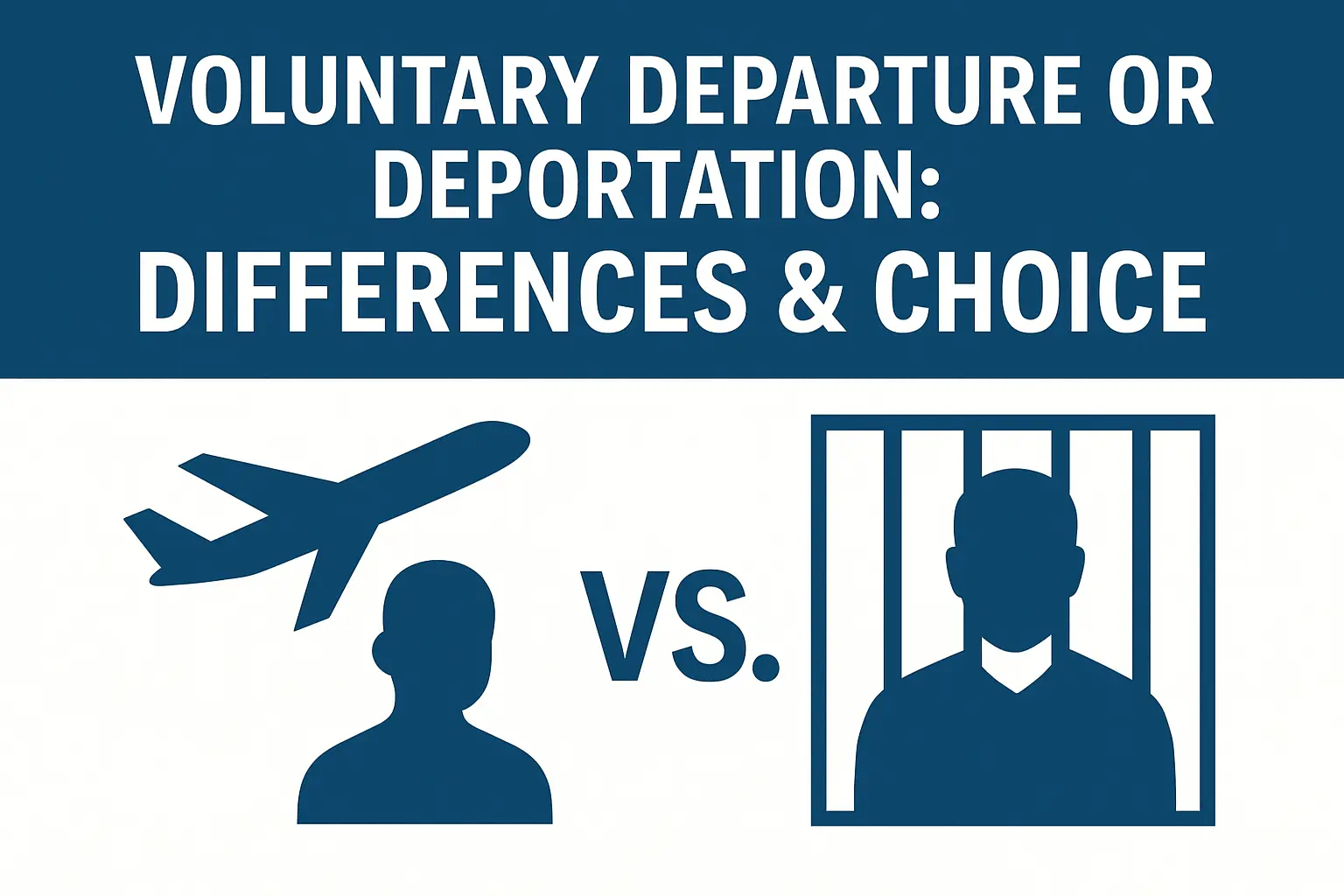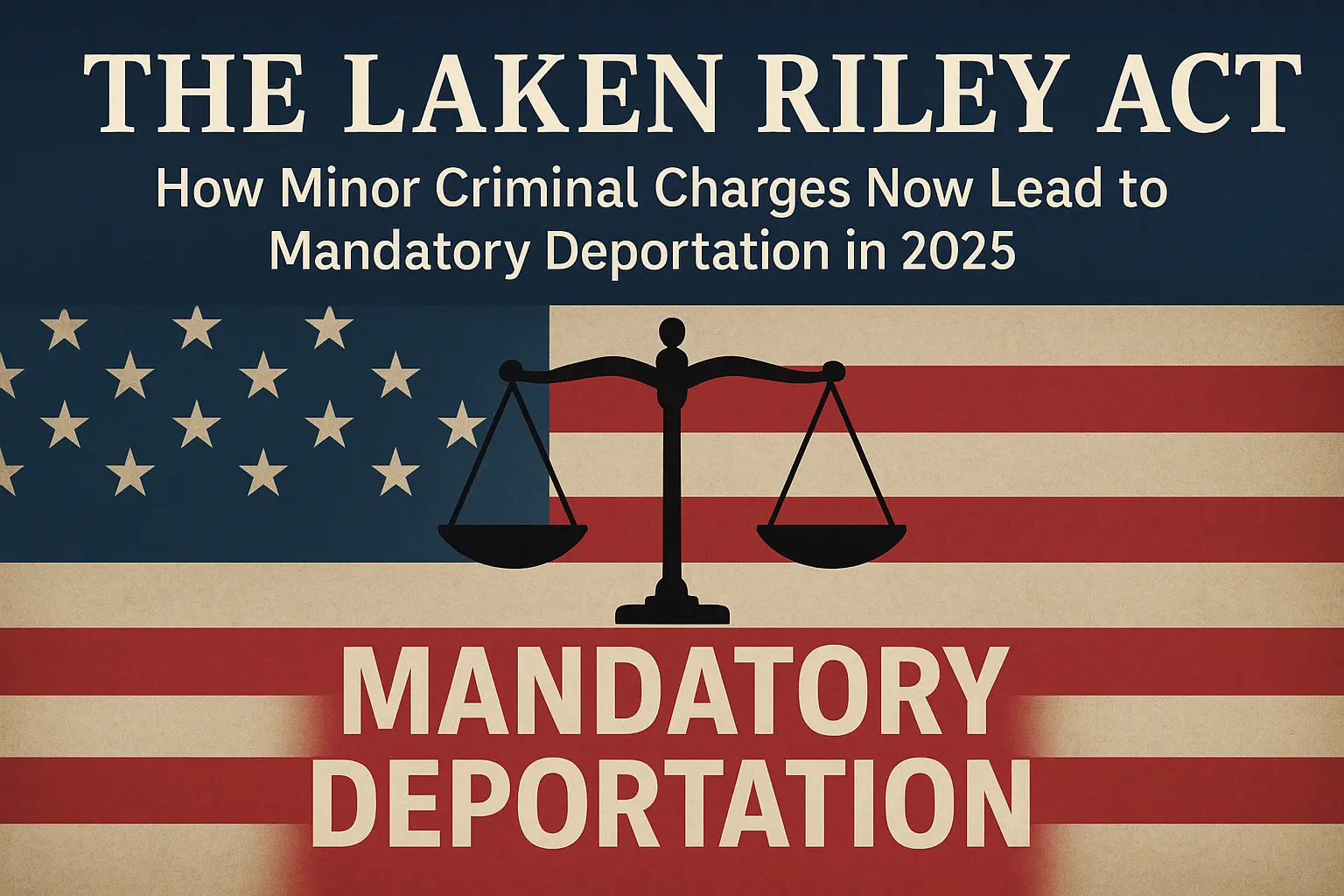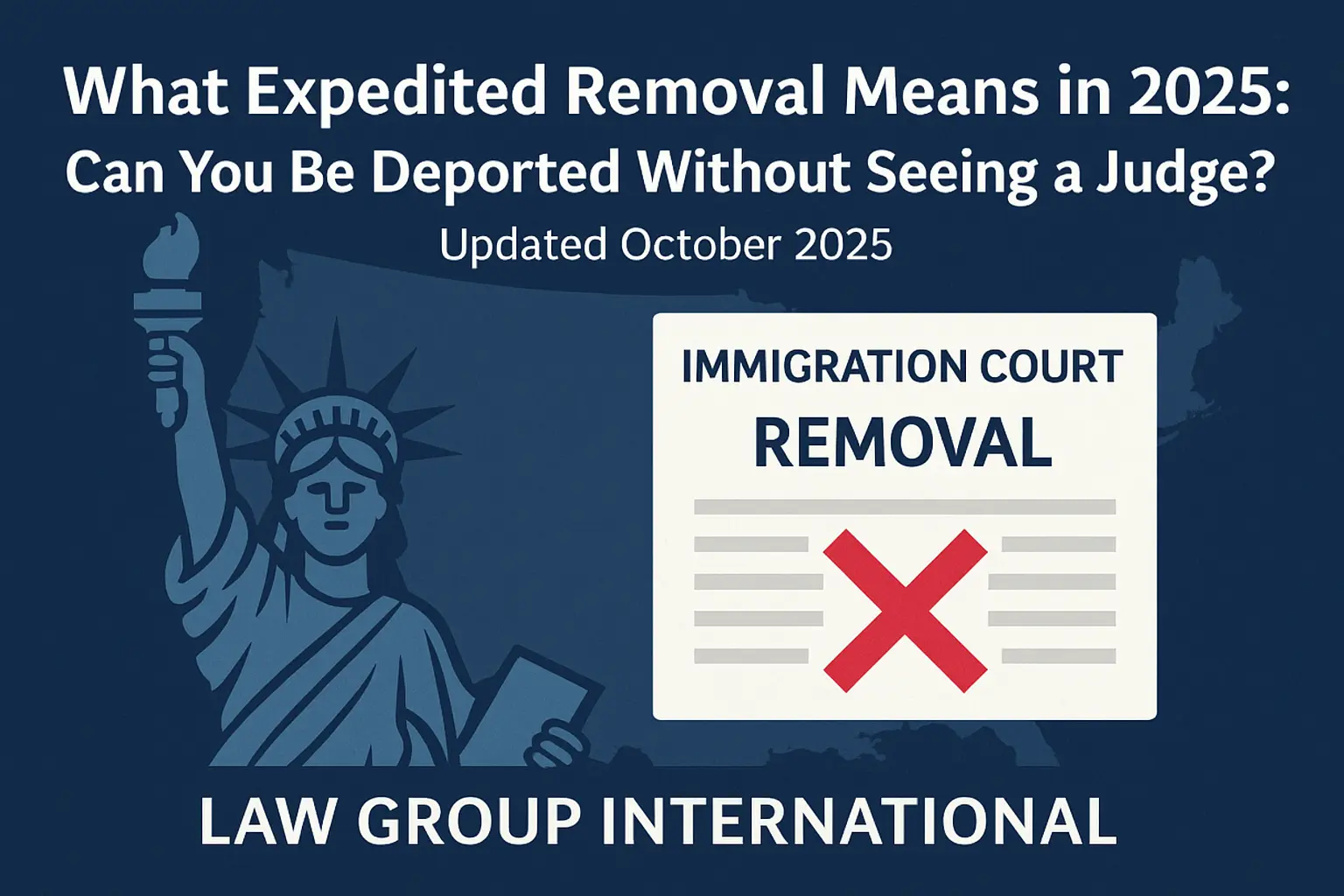Green Card vs. Non-Immigrant Visa: Main differences and considerations
When planning your future in the U.S., one decision can shape everything: should you pursue a Green Card or start with a non-immigrant visa? Whether you’re exploring job opportunities, planning to study, or looking to reunite with family, choosing the right path impacts your legal rights, work flexibility, and long-term goals.
In this article, Law Group International breaks down the differences between permanent residency and temporary visas, outlines the pros and cons of each, and provides key insights to help you make an informed decision.
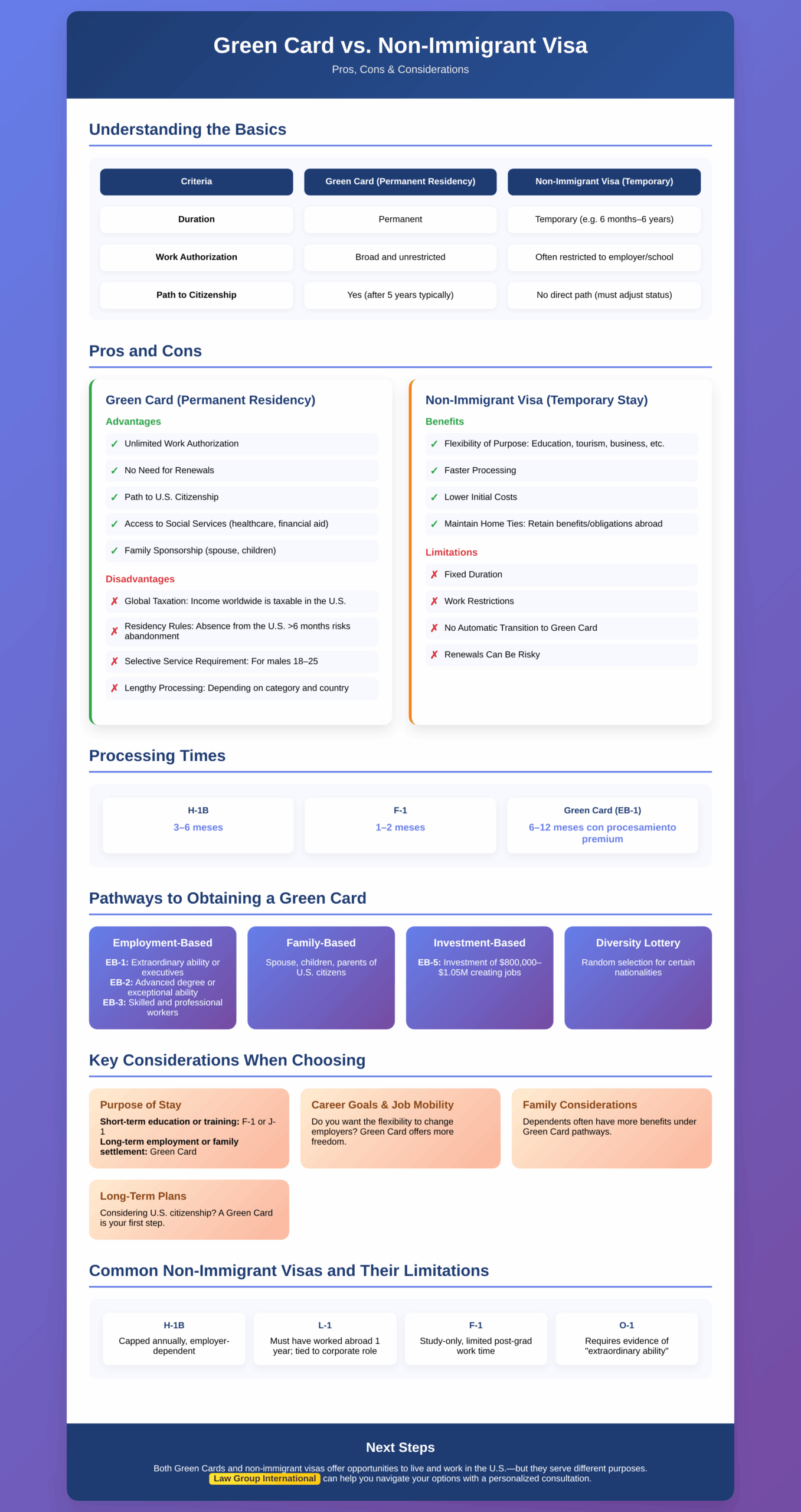
Understanding the Basics
What Is a Green Card and What Is a Non-Immigrant Visa?
- Green Card: A Green Card grants lawful permanent resident status in the U.S., allowing you to live and work indefinitely, travel freely, and eventually apply for citizenship. Learn more at the USCIS Green Card page.
- Non-Immigrant Visa: A non-immigrant visa allows for temporary stays in the U.S. for specific purposes like tourism, education, or employment. These include popular visas such as H-1B, F-1, and B-2. See the full list on USCIS Nonimmigrant Visas.
| Criteria | Green Card (Permanent Residency) | Non-Immigrant Visa (Temporary) |
| Duration | Permanent | Temporary (e.g. 6 months–6 years) |
| Work Authorization | Broad and unrestricted | Often restricted to employer/school |
| Path to Citizenship | Yes (after 5 years typically) | No direct path (must adjust status) |
Pros and Cons of a Green Card
Advantages of Permanent Residency
- Unlimited Work Authorization
- No Need for Renewals
- Path to U.S. Citizenship
- Access to Social Services (healthcare, financial aid)
- Family Sponsorship (spouse, children)
Disadvantages of Permanent Residency
- Global Taxation: Income worldwide is taxable in the U.S.
- Residency Rules: Absence from the U.S. >6 months risks abandonment.
- Selective Service Requirement: For males 18–25.
- Lengthy Processing: Depending on category and country.
Pros and Cons of Non-Immigrant Visas
Benefits of Temporary Stay
- Flexibility of Purpose: Education, tourism, business, etc.
- Faster Processing
- Lower Initial Costs
- Maintain Home Ties: Retain benefits/obligations abroad
Limitations of Temporary Status
- Fixed Duration
- Work Restrictions
- No Automatic Transition to Green Card
- Renewals Can Be Risky
Key Considerations When Choosing
Purpose of Stay
- Short-term education or training? F-1 or J-1
- Long-term employment or family settlement? Green Card
Career Goals & Job Mobility
- Do you want the flexibility to change employers? Green Card offers more freedom.
Family Considerations
- Dependents often have more benefits under Green Card pathways.
Financial Implications
- Green Cards may carry higher legal and tax burdens but more long-term stability.
Processing Times
| Visa Type | Typical Timeline |
| H-1B | 3–6 months |
| F-1 | 1–2 months |
| Green Card (EB-1) | 6–12 months with premium processing |
Long-Term Plans
- Considering U.S. citizenship? A Green Card is your first step.
Pathways to Obtaining a Green Card
Employment-Based
- EB-1: Extraordinary ability or executives.
- EB-2: Advanced degree or exceptional ability.
- EB-3: Skilled and professional workers.
Read our category comparison guide for more insight.
Family-Based
- Spouse, children, parents of U.S. citizens.
Investment-Based
- EB-5: Investment of $800,000–$1.05M creating jobs.
Diversity Lottery
- Random selection for certain nationalities. Details at Visa Categories – DOS.
Common Non-Immigrant Visas and Their Limitations
- H-1B: Capped annually, employer-dependent.
- L-1: Must have worked abroad 1 year; tied to corporate role.
- F-1: Study-only, limited post-grad work time.
- O-1: Requires evidence of “extraordinary ability.”
Transitioning from a Non-Immigrant Visa to a Green Card
Dual Intent Visas
- H-1B and L-1 allow for immigrant intent, enabling Adjustment of Status.
Adjustment of Status (AOS)
- File Form I-140 (employment-based)
- File Form I-485 if visa number is current
Consular Processing
- For applicants living abroad, handled by U.S. consulate and NVC.
Risks and Challenges
- Denials: Due to missing documents or eligibility gaps.
- Status Violations: Overstays or unauthorized work can jeopardize future options.
- Policy Shifts: Immigration policies can change quickly, stay informed.
The Role of an Immigration Attorney
Expert Advice
- Understand what path fits your background and goals best.
Strong Applications
- Attorneys anticipate Requests for Evidence (RFEs) and build solid evidence portfolios.
Avoid Costly Errors
- One mistake can lead to denials or delays, legal help reduces risk.
Next Steps
Both Green Cards and non-immigrant visas offer opportunities to live and work in the U.S.—but they serve different purposes. Green Cards provide long-term security and work flexibility, while non-immigrant visas are ideal for short-term goals.
If you’re unsure which route is right for you, let Law Group International help you navigate your options.
Contact us today to schedule a personalized consultation with an experienced immigration attorney.
Explore More Immigration Topics
Immigration Policy in 2026
January 1, 2026
Deportations to Venezuela and El Salvador
December 31, 2025
Religious Persecution Asylum
December 30, 2025
Northern Virginia Immigration Court
December 20, 2025
Federal Court Blocks Expanded Rapid Deportations
December 16, 2025
What to Do If ICE Comes to Your Door
December 14, 2025
Voluntary Departure vs. Deportation
December 12, 2025
What expedited removal means
November 19, 2025
Waivers that Matter in Court
November 11, 2025

